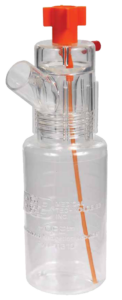Nebulizers: BandB-Medical's Guide to Respiratory Health
Are you ready to take a deep breath and dive into the world of respiratory health? Look no further, because BandB-Medical is here with the ultimate guide to nebulizers! Whether you’re a seasoned user or someone new to this incredible device, we’ve got all the information you need. From understanding how nebulizers work to their benefits in managing respiratory conditions, join us on this informative journey towards better breathing. So sit back, relax, and let’s explore everything there is to know about nebulizers – your gateway to optimal respiratory health!

What are Nebulizers?
Nebulizers are medical devices that help to increase the amount of oxygen that is delivered to the lungs. They are used to treat a variety of conditions, including asthma, COPD, and chronic obstructive pulmonary disease (COPD). Nebulizers work by breaking up and dispersing particles in the air, which increases the flow of oxygen into the lungs.
Nebulizers can be used in a number of ways. They can be used as a standalone device, or they can be attached to an inhaler machine. In standalone use, nebulizers are placed against the chest and compressed using air pressure. This causes the particles to break down and disperse in the air stream, increasing the amount of oxygen that is delivered to the lungs. When attached to an inhaler machine, nebulizers are act as a delivery system for medications or supplements administered through an inhaler. This allows patients with serious respiratory conditions to maintain their health while receiving treatment.
There are a number of different types of nebulizers available on the market today. Some options include automatic nebulizer machines, portable nebulizers, and semi-automatic nebulizers. Automatic machines require no input from users other than selecting an inhaled medication or supplement and setting dosage levels. Portable nebulizers are small enough to take with you when you travel, making them ideal for people who need frequent access to treatment.
Types of Nebulizers
There are three types of Nebulizers: compressor-driven, noncompressor-driven, and jet nebulizers.
Compressor-driven Nebulizers: These devices use a motor to compress the air and create a mist. They are the most common type of Nebulizer and are used for treating serious respiratory conditions such as asthma.
Noncompressor-driven Nebulizers: These devices use water vapor to produce a mist. They are less common than compressor-driven machines, but they are more effective in treating certain respiratory conditions.
Jet Nebulizers: These devices use a propeller or fan to create a high-velocity stream of water vapor that is directed into the patient’s mouth or nose. Jet nebulizers are used mainly for treating severe breathing conditions such as cystic fibrosis.
How do Nebulizers Work?
Nebulizers are machines that create a mist by breaking down and atomizing a liquid or gas. This mist is then inhaled through the mouth or nose. Nebulizers are used to treat conditions such as bronchitis, emphysema, and chronic obstructive pulmonary disease (COPD).
The main types of nebulizers are continuous-flow (CF) and non-continuous-flow (NCF) devices. CF nebulizers pump a stream of air at a high speed through a flexible hose, while NCF nebulizers use a single jet of air that sprays the liquid or gas over a long period of time. Nebulizers come in different sizes and can be used with drugs in powder, pill, or liquid form. They can also be equipped with filters to remove particles smaller than 10 microns in diameter, which is the size of bacteria and some other respiratory pathogens.
The benefits of using nebulizers include:
1. Nebulization therapy is effective for treating conditions such as bronchitis, emphysema, and COPD.
2. Nebulization therapy is less expensive than traditional treatments such as antibiotics or surgery.
3. Nebulization is safe for patients with asthma and other breathing conditions.
Nebulizer use in Respiratory health
Nebulizers are devices that use compressed air to improve breathing. They are often used to treat breathing problems, such as asthma or chronic obstructive pulmonary disease (COPD). Nebulizers can also be used to help relieve respiratory symptoms, such as coughing and shortness of breath.
Nebulizers work by breaking down substances in the air into smaller pieces. This allows them to reach deeper into the lungs and increase airflow. Nebulizers can be helpful for people with breathing problems because they allow them to take deep breaths and avoid lung congestion.
Some potential benefits of using a nebulizer include:
• Reduced symptoms from respiratory conditions, such as asthma or COPD
• Reduced need for medication
• Improved breathing quality in people with breathing problems
• Increased ability to breathe through the nose instead of the mouth
Nebulizer Safety
The use of nebulizers for respiratory health has been around for many years and is considered a safe and effective way to treat some respiratory conditions. Nebulizers use a jet of air to help disperse medication or air into the lungs. They are typically used to breathe in medications, such as antibiotics, for treating infections or asthma. Nebulizers come in many different shapes and sizes and can be used with a variety of drugs.
There are many things to consider when using a nebulizer, including safety matters such as proper use instructions and cleaning tips. When using a nebulizer, it is important to know your medical history and any other health conditions you may have, as well as the medications you plan to take with the nebulizer. Always consult your doctor before using a nebulizer if you have any questions about its safety or usage.
Conclusion
Nebulizers are a very important tool for respiratory health and should not be taken lightly. In this guide, we have outlined all the key aspects of nebulizers and provided information on how to use them safely and effectively. We hope that by reading this article you will better understand why they are so important and will use them to improve your respiratory health.